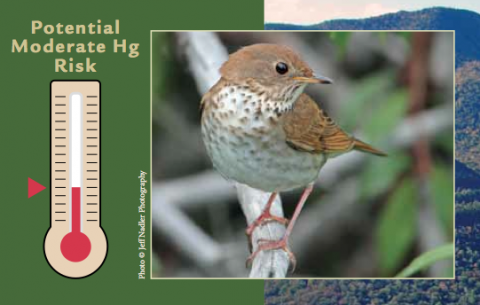
Above: A photo graphic from "Hidden Risk," a new study about the prevalence of mercury in wildlife of the northeastern United States.
A study released by the Biodiveristy Research Institute and the Nature Conservancy today has found that there are "high levels of mercury contamination in songbirds and bats throughout 11 northeastern states."
The study has a big Catskills connection. Anthony DePalma writes in the New York Times today about watching biologist David Evers, one of the lead scientists on the study, sample mercury in Catskills thrushes:
It was in 2005 that I first accompanied David Evers into the cool dampness of a Catskills forest. At the time, Dr. Evers, a biologist and director of the Biodiversity Research Institute in Gorham, Me., was hunting for some pretty small game. He had draped a net between several trees in a section of the forest in upstate New York and, with the help of a portable cassette player that replicated the sound of songbirds trilling merrily away, was luring tiny wood thrushes into the trap.
The big news from the new study, DePalma writes in another NYT article today, is that mercury contamination was found in birds that were once thought to not be at risk:
Methylmercury, the most toxic form of the heavy metal, was found to be widespread throughout the Northeast — not just in lakes and rivers, as had already been known, but also in forests, on mountaintops and in bogs and marshes that are home to birds long thought to be at minimal risk.
You can read the full study below.
HIDDEN RISK: MERCURY IN TERRESTRIAL ECOSYSTEMS OF THE NORTHEAST










